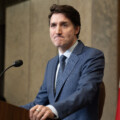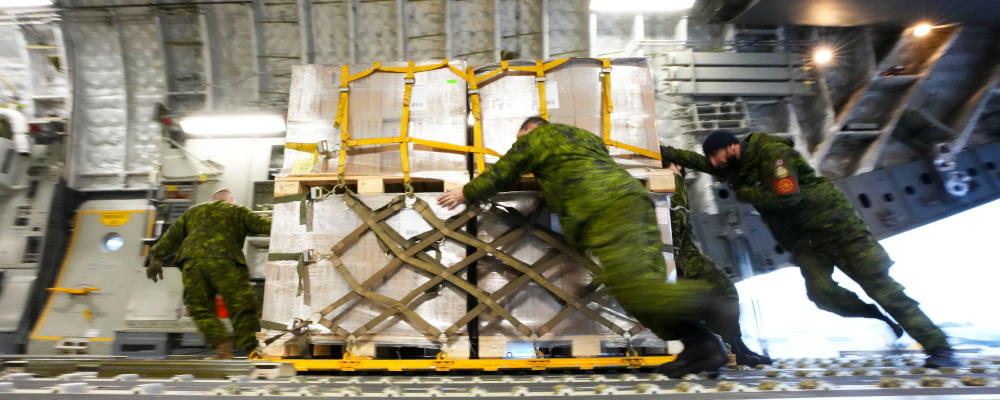The war in Ukraine galvanized the West to assist Kyiv in fighting the Russian invaders. NATO nations and others sent munitions, artillery, armoured vehicles, medicines and personal weapons. The United States in particular has provided more than US$9 billion in military aid, including HIMARS—High Mobility Artillery Rocket Systems—that have proved to be precise and devastating in eliminating Russian supply dumps and command centres.U.S. pledges largest Ukraine arms delivery yet with $1 billion more in rockets and other weapons https://www.pbs.org/newshour/world/u-s-pledges-largest-ukraine-arms-delivery-yet-with-1-billion-more-in-rockets-and-other-weapons Other NATO members have provided tanks and other armoured vehicles, mobile artillery, vehicles, and supplies.
Canada too has done its part. The government has provided $1.87 billion in grants and loans, imposed sanctions on a host of Russian individuals, banks, and commercial entities, and it is seizing assets of sanctioned Russian individuals and companies that are to be used to assist Ukrainian reconstruction.
Before Moscow’s invasion on February 24, the Canadian Armed Forces trained 33,000 Ukrainian soldiers in tactics and military skills.Operation UNIFIER https://www.canada.ca/en/department-national-defence/services/operations/military-operations/current-operations/operation-unifier.html After the fighting began, Ottawa committed $626 million in military aid already delivered or planned. This includes two C-130 aircraft and 40 to 50 service personnel to deliver supplies provided by allies; 150 military personnel in Poland to assist refugees with humanitarian aid; 18 drone cameras and maintenance and repairs for these cameras; 39 armoured combat support vehicles; and 4 M777 artillery pieces, 10 replacement barrels, and 20,000 M777 rounds (purchased from the United States for $98 million).
There is more: high-resolution satellite imagery; eight commercial pattern armoured vehicles; 4500 M72 rocket launchers; 7500 hand grenades, 39,000 meal packs, 1600 fragmentation vests; and 100 Carl Gustav recoilless rifles and 2000 rounds of ammunition. The government has also provided night vision gear, helmets, body armour, pistols, carbines, machine guns, sniper rifles, and 1.5 million rounds of ammunition.
While some of the Canadian-supplied military assistance is top of the line, some aren’t. The Carl Gustav anti-tank weapon was developed in the late 1940s in Sweden. It has been modernized since, but the Canadian Forces use 1964 and 1986 variants which are not, as more modern Swedish NLAW anti-tank weapons are, “fire and forget” but “line of sight.” In other words, the shooter must be able to see the armoured vehicle to have a chance of knocking it out, and this exposes him to enemy fire. The Swedish weapons can be fired from cover and will track the target as it moves. Similarly, the M72 rocket launchers are a Vietnam-era weapon with a maximum range of 200 metres. On the other hand, the M777 artillery, used by Canadian gunners in Afghanistan, is first-rate and capable of hitting targets up to 25 kilometres distant. The CAF had 37 of these 155mm guns before the government sent four to Ukraine.
The first question now is what more Canada does for the Ukrainians. The answer unfortunately is not much, so strapped for modern equipment are the Canadian Armed Forces. The Chief of the Defence Staff, General Wayne Eyre, actually urged Canadian industry to go on a war footing to produce munitions. There is no sign as yet that industry has responded, and absolutely no indication that the federal government is going to provide Canada’s military with extra funds to replace what has been gifted to Ukraine.
This matters. The CAF is now without an effective antitank weapon. It needs something like the Swedish NLAW in quantity. The military has no anti-air missiles for soldiers to use against helicopters and aircraft. The British Starstreak is a man-portable air defence system that is proving very effective in Ukraine, and it is something that the CAF might adapt. The CAF also lacks an anti-aircraft system to deal with faster fighters; once again the British Star Sabre system or the American NASAMS can provide short- or medium-range protection. Canada should consider acquiring these or something similar as a matter of urgency.
And what are the chances of the Canadian military getting this new weaponry—or even replacing its obsolescent equipment that it dispatched to Ukraine? In most countries, replacing donated weapons would be a no-brainer. In this nation, however, the defence procurement system is completely broken, and there is no indication that the government will provide the necessary funds.
Defence minister Anita Anand has generally received good reviews for her performance at the Department of National Defence. But her previous Cabinet post was minister of public services and procurement, and she had no success there in getting the military what it needed when it needed it. That was not wholly her fault, of course. Defence procurement in Canada is tied in knots by departmental infighting, insistence on Canadian sourcing, or demands for industrial offsets. The result has been huge cost overruns and years of delay. The costs of the Navy’s planned new vessels are, at a minimum, five to ten times the cost of similar ships built in Denmark, Poland, or Korea.New navy supply ships face more delays and cost increases, federal officials confirm https://ottawacitizen.com/news/national/defence-watch/new-navy-supply-ships-face-more-delays-and-cost-increases-federal-officials-confirm#:~:text=article%20continues%20below.-,Article%20content,it%20went%20to%20%244.1%20billion. Even pistols took years to be acquired for the CAF.Delivery of new pistols for Canadian Army delayed until 2023 https://ottawacitizen.com/news/national/defence-watch/delivery-of-new-pistols-for-canadian-army-delayed-until-2023#:~:text=The%20Canadian%20government%20had%20hoped,was%20designed%20to%20favour%20its
Now, however, the military has been stripped even of much of the obsolete gear it had. It is essential that replacements—or preferably more modern weaponry—be acquired. The world is a dangerous place right now with Russia, China, North Korea, and other states making threats. We might hope we can continue to be sheltered by the oceans and protected by the Americans. But we cannot count on that.
The soldiers, sailors and airforce personnel that Canada has are well-trained and capable. But they need the best equipment there is, and they need it now.
Recommended for You

The Notebook by Theo Argitis: Mark Carney’s first major tests

The Weekly Wrap: Trudeau left Canada in terrible fiscal shape—and now Carney’s on clean-up duty

‘Another round of trying to pull capital from Canada’: The Roundtable on Trump’s latest tariff salvo

‘We knew something was coming’: Joseph Steinberg on how Trump is ramping up his latest tariff threats against Canada



